Canon P LTM Camera Review
Canon LTM series continues. The time has come to put down words about one of the best looking 35mm cameras around. The Canon P.
I'm a bit fuzzy where in my camera GAS peak I got this camera. It was definitely after Canon Model 7 which was the first Canon LTM camera I got. I can't recall how I found Canon P but its looks must've played a part in it. Canon Model 7 is not ugly but put it next to Canon P and it seems bulky and...not the best looking.
I got it, as all things, from Ebay. It's not easy to find Canon LTM stuff in Europe so mine came from Japan. It's in a very good condition with only minor cosmetic issues. It also has a slightly wrinkly shutter curtain but more about that later. Prices appear to have risen for this camera but you can still get a good copy for around $150 to $200.
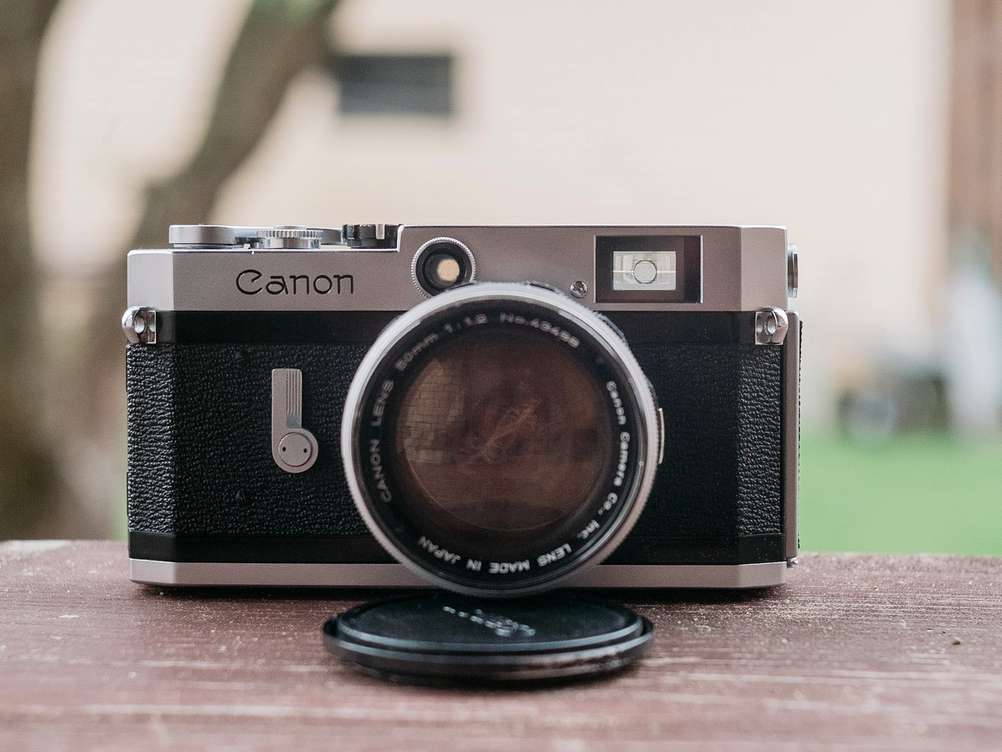
Here's Canon P. Sadly the camera I usually use for taking photos of...cameras...ran out of battery power. To keep within my self imposed deadline - some lower quality photos of the camera itself this time. Luckily the camera is so good looking that it doesn't need nice photos. It still looks good.
Aesthetics
Let's get this out of the way early. It's a gorgeous looking camera. Simple. Minimalist. It has a good looking Canon logo instead of the newer one. This is all subjective so I won't go into it but I adore how it looks. Stick a large aperture lens on it ( like 50mm f1.2 ) and put it in a case. It will look better than any white statue or flowers. There isn't any single thing that makes it look good but the "hidden" rewind lever definitely comes close. It's folded within the top plate so doesn't intrude the clear lines which makes the whole camera look like a complete unit.
If I would have to call out one thing that I don't love it would be the arrangement of viewfinder and rangefinder windows. Rangefinder window in particular doesn't align with anything so can look out of place. It's also round whereas the rest of the camera has angles not radiuses. Making it square and moving it would be my recommendation.
Build Quality
The camera is built very well but not to the same level as Leica M3 or any Leica M camera ( that's made by Leica ). ( I compare it to Leica because that's the most premium camera that I have used. ) It feels solid. Nothing rattles or appears loose but there is a slight hollow feeling. You can feel that there is empty space behind the top plate. And you can definitely feel the empty space behind the back door. Don't get me wrong - it's not bad. But where Leica feels like it's carved from a single piece - Canon feels like it's an assembly of parts.
The slight hollowness has a benefit in weight. Canon P is not a heavy camera. It's also not a large camera. These aspects will benefit people with smaller hands. Or someone who doesn't like to carry around heavy cameras. I prefer heavier things but there is no right or wrong.
Although the camera is light - it balances well with lenses. Even heavier ones. For example Canon 50mm f1.2 LTM is close to the weight of the camera but still manages to balance well. Remarkable.

Canon P with the Canon 50mm f1.2 LTM lens on. It does fall forward with this lens when put on level ground. When in hands it doesn't feel bad though.
One thing has to be mentioned about shutter curtains. It's a traditional horizontal shutter curtain but it's not made from cloth as it is on most other cameras. It's made from metal. And this metal likes to wrinkle over time. Most Canon LTM cameras with metal shutter curtains will have wrinkles. Luckily this doesn't impact functionality. My Canon P has a slightly wrinkled curtain. One of the Canon Model 7 cameras I had was with a very wrinkly shutter curtain. It worked fine.
Another point on my particular Canon P shutter. In cold weather the slow speeds stick and fast speeds have shutter capping. The very likely reason for this is that the camera needs CLA. Thought that this is worth mentioning.
Viewfinder
Canon P was sold as a "consumer" version of Canon's pro camera line. Whilst this doesn't show in the visual or build quality department - it does make a mark in the viewfinder.
Viewfinder isn't bad. It's plenty bright. It's definitely big enough. And it has good magnification. But it has three framelines - and they are all visible at the same time. You get 35mm, 50mm and 100mm framelines. 35mm and 50mm is all well and good but 100mm is a bit of an oddball size. Canon did make 100mm LTM lenses but I haven't used one. I wouldn't call it a popular focal length. Having three framelines visible at the same time is not great. It's a bit crowded. Canon Model 7 allows you to switch between various focal lengths but never shows more than 2 at the same time. 35mm framelines are also at the very edges of the viewfinder. I don't wear glasses and even I have to move my eye to see the edges in full. If you wear glasses I expect difficulty in seeing them. 50mm and 100mm framelines are visible with no problems.
Magnification is 1x which means that it shows the world as you see it with your own eyes. It's great that they managed to put 35mm framelines with this magnification. Leica M3 has the highest magnification of all Leica made M cameras. It has magnification of 0.92x which is close to but not quite 1:1 with the real world. Even with a wider viewfinder M3 doesn't have framelines for 35mm.
There's an interesting effect that you can use with 1x magnification viewfinders. Keep both eyes open when shooting. You will see as you normally see with your eyes - just with the framelines and rangefinder patch. It's quite interesting but I have never used it intentionally. Some people like this. I can't relate but I can see it being helpful. Especially for my wife who can't close one eye at a time.
Rangefinder patch is OK but not to my taste. It's a circular patch with faded ( instead of sharp ) edges. I prefer square and sharp patches. It's definitely good enough for precise focussing and you can see the patch well. Still - I wish they would've made it square or rectangular. It will beat any soviet rangefinder with ease. But it won't beat M3 ( or any other Leica M patch ).
Ease Of Use
It's an old, analog, mechanical camera. Of course it's easy to use. You only get the controls that you need and nothing else.
Film advance lever is easy and satisfying to use. It's long enough to provide good leverage and it has the "spot on" resistance of not too easy and not too hard.
Shutter button is OK. Like one would expect. Twisty control below and around the shutter button is there to switch between normal shooting mode and film rewind mode. You won't trigger it by accident. It is missing "lock" mode. If you're used to winding film after taking a shot - there won't be a way to lock the shutter so you could get accidental shutter releases.
Shutter speed dial is also easy to use but you can't use it with one finger. It sits on the top plate and doesn't go to the edge so you have to grip it with two fingers to twist. I find this acceptable for manual control cameras. I never blindly change the shutter speed on them whilst having my eye at the viewfinder. I set the shutter speed before I put the camera to my eye and take a photo.
The glorious rewind lever is easy to pull out from the top plate and also nice to rewind. It doesn't have much built in resistance so if you let go of it during rewind it can twist.
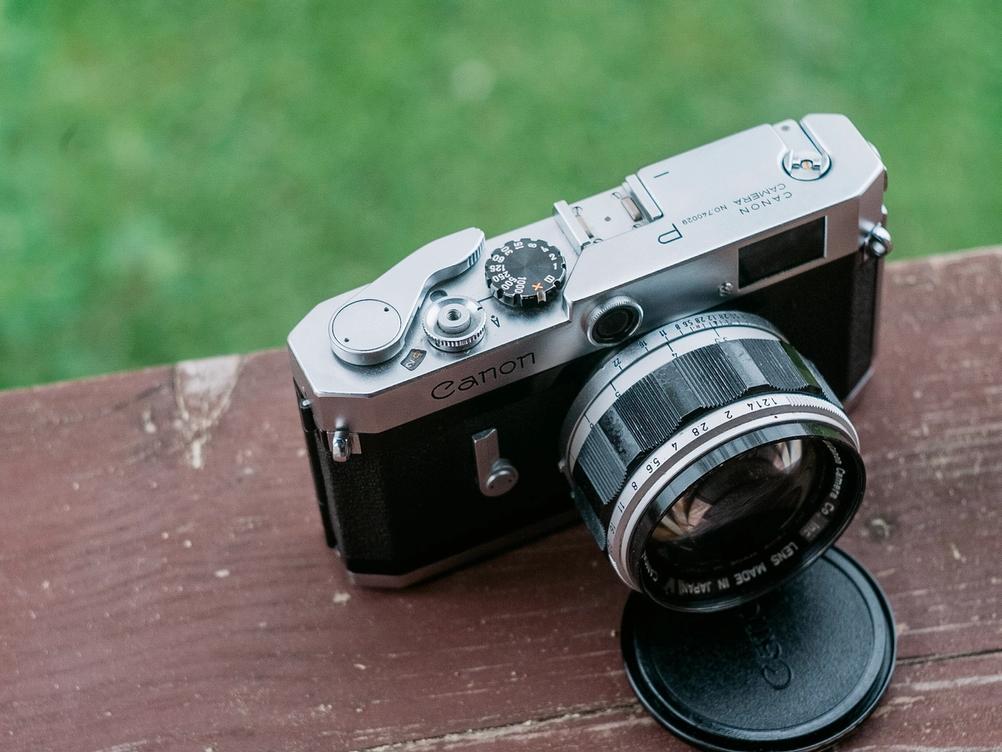
All the controls and elements on the top plate.
The small circle behind the shutter button is where you can see whether film is engaged when you advance it. Similar to the one on the rewind lever on the right in this picture. The orange line will rotate if everything is engaged properly.
On the back door there is a dial that allows setting of ISO. Camera doesn't have a meter so it's there to remember what speed film is in the camera. As long as it's not an ISO 3200 speed film because it only goes to 1600.
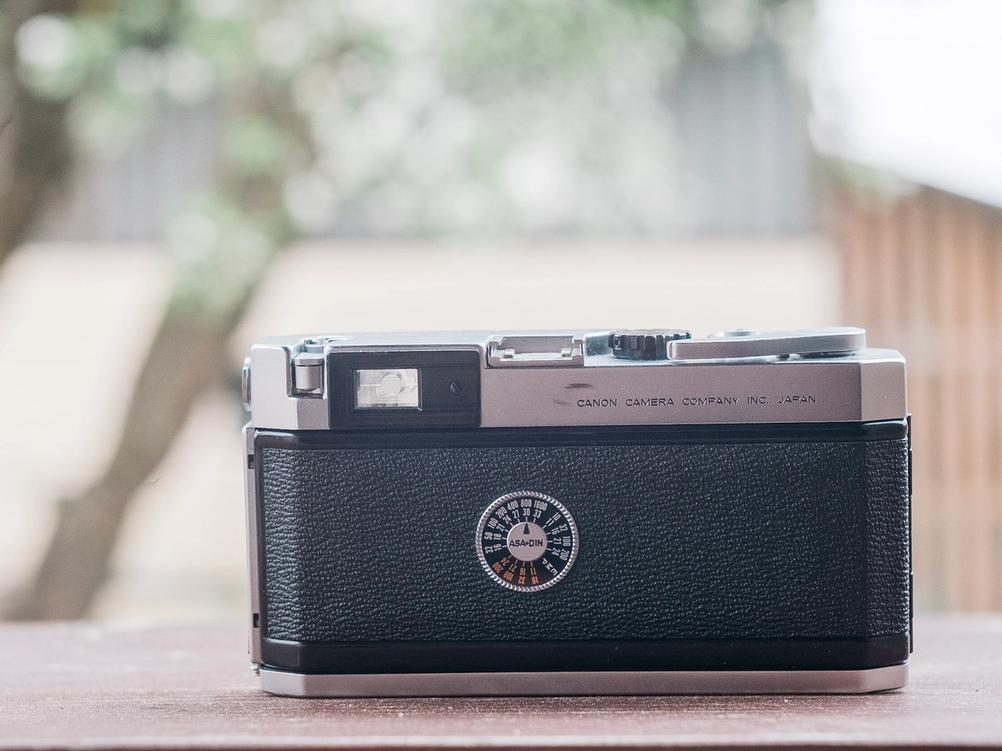
Canon P from the back. Not too much going on here. You can see the drawn framelines if you look into the viewfinder in this picture.
As I look at this - I want the ISO dial to be centred. Never noticed that before. Now I will notice it forever.
There's a self timer lever on the front of the camera.
To load the film one needs to twist the "lock key" at the bottom plate. After that it will be possible to pull another trigger that will release the back door. This protection will pretty much guarantee that the back door will never open by accident. Canon P isn't a bottom load camera so some may find it easier to load than Leica M3 for example. It's definitely easier and faster to load than older Barnack style cameras like Leica III or Canon IVSB. To get confirmation that film is loaded - there are rotating marks on the rewind lever and next to the shutter button. When advancing film you will see them rotate and your heart will fill with confidence.
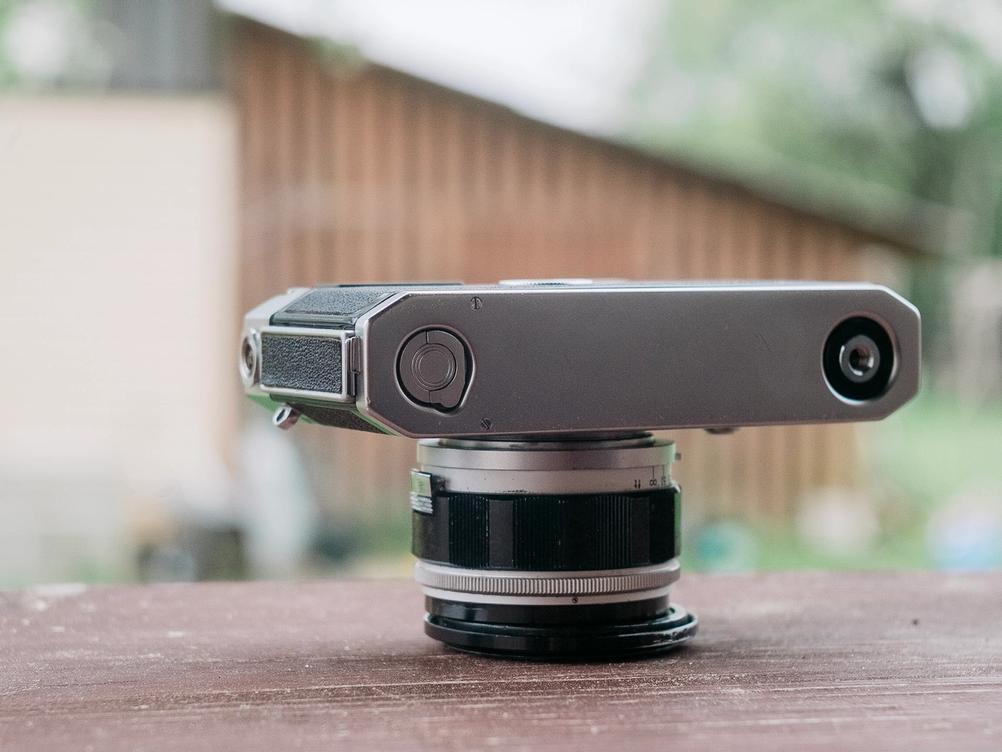
This on the left on the bottom plate is how you initiate the back opening process. Turning it will release the pin on the very left. That will allow you to pull the pin behind the first pin ( all the pins ) which will open the back.
Thing on the right is how you would attach this camera to a tripod. I have never done this.
Holding the camera feels good. Even though I complained about the position of the rangefinder window - I have never covered it with my fingers by accident. Which has been the case with other rangefinder cameras. Like Leica cameras.
All controls attach to the right fingers and I've never gotten confused. It all makes sense.
Functionality
You can advance and rewind film. There is a self timer. And you can set shutter speed from 1s to 1/1000th of a second. There's also a bulb mode. It has all the possible features that one would need.
Results
In the analog world the camera doesn't really have a weight in the final image. For me the most important thing in a camera is whether it makes me want to pick it up and shoot photos. And this camera does that. To a level. It's very good looking so just passing by the camera you want to pick it up and do something with it. At that point the feel of the camera falls short when compared to the looks. Don't get me wrong - it's built well and feels nice. But I have cameras that feel nicer in the hands so I use them more.
A major part in the final look of the pictures you take belongs to the lenses. As Canon P uses an LTM mount - it has access to many great lenses. You're in good hands.
Even though I said that the camera doesn't have an impact on the final image - I will show you some images the Canon P has made. Because what good is a photo review without pictures. I have to note that for some reason I haven't taken many photos with Canon P that I love. I don't have a reason for it. Is how it is.
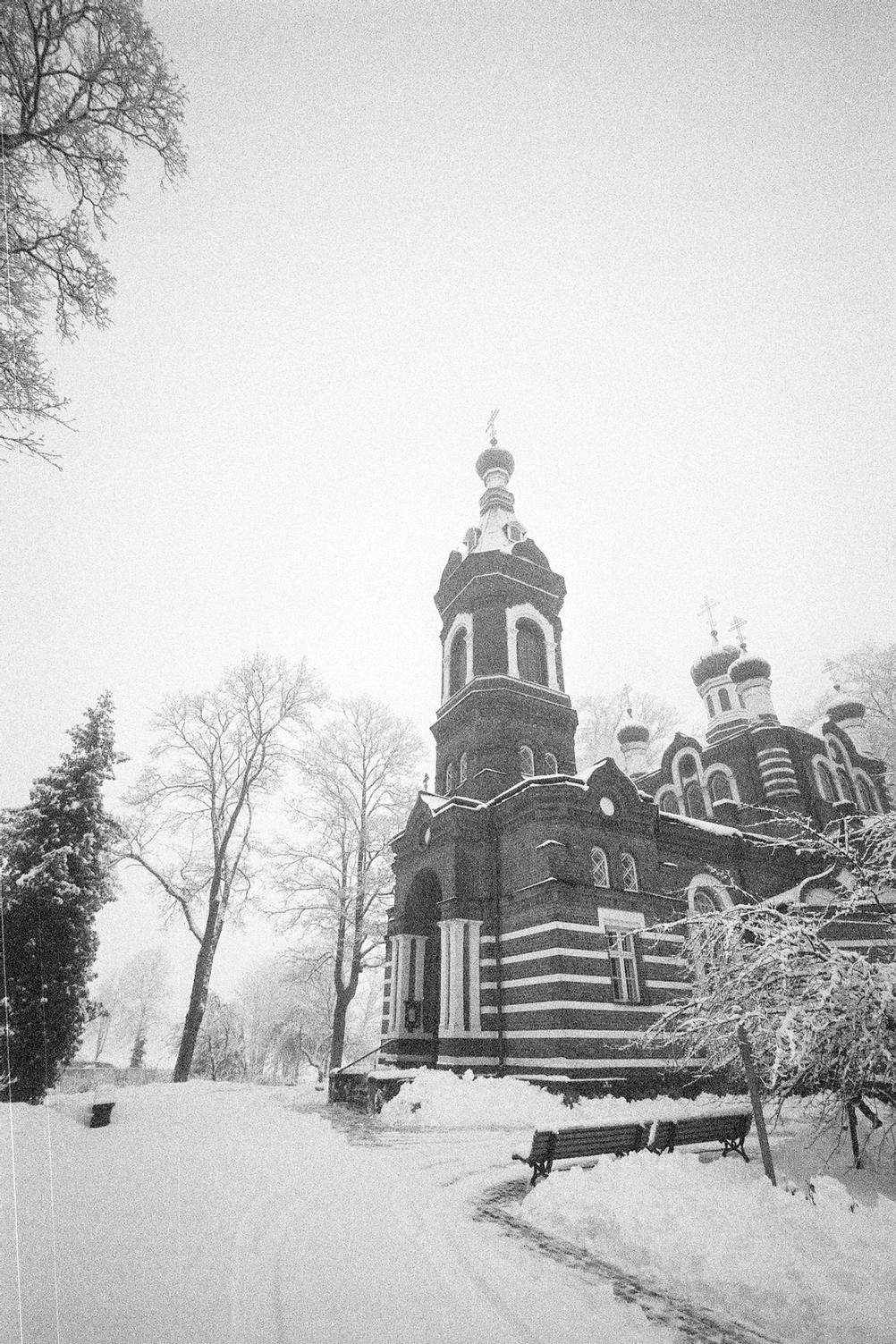
- Camera
- Canon P
- Lens
- Voigtländer Super Wide Heliar 15mm f4.5
- Film
- Kodak T-MAX 400 EI800
- Development
- Kodak HC-110; Dilution B; 7:30min
- Scanner
- Reflecta ProScan 10T
I quite like using Canon P with the wide Voigtländer 15mm. Smaller Canon P works well with the small lens even if you have to use an external viewfinder. External viewfinder is needed because no sane rangefinder camera will show the wide 15mm scene.
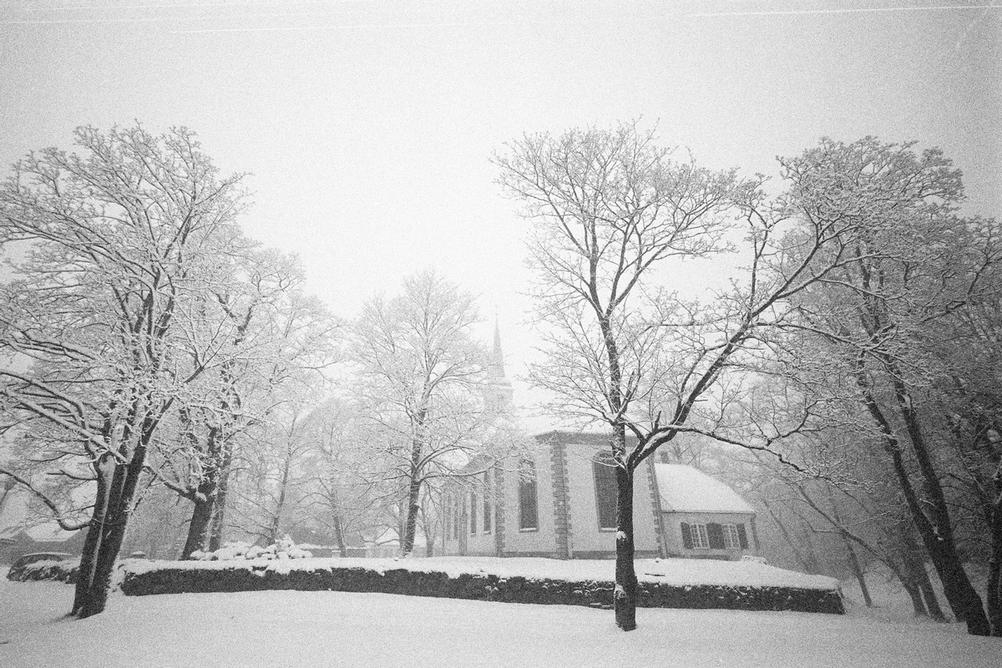
- Camera
- Canon P
- Lens
- Voigtländer Super Wide Heliar 15mm f4.5
- Film
- Kodak T-MAX 400 EI800
- Development
- Kodak HC-110; Dilution B; 7:30min
- Scanner
- Reflecta ProScan 10T
Shot similar to the last one. The camera wasn't out in the cold for too long which meant that the shutter capping issue was not showing its ugly head yet.
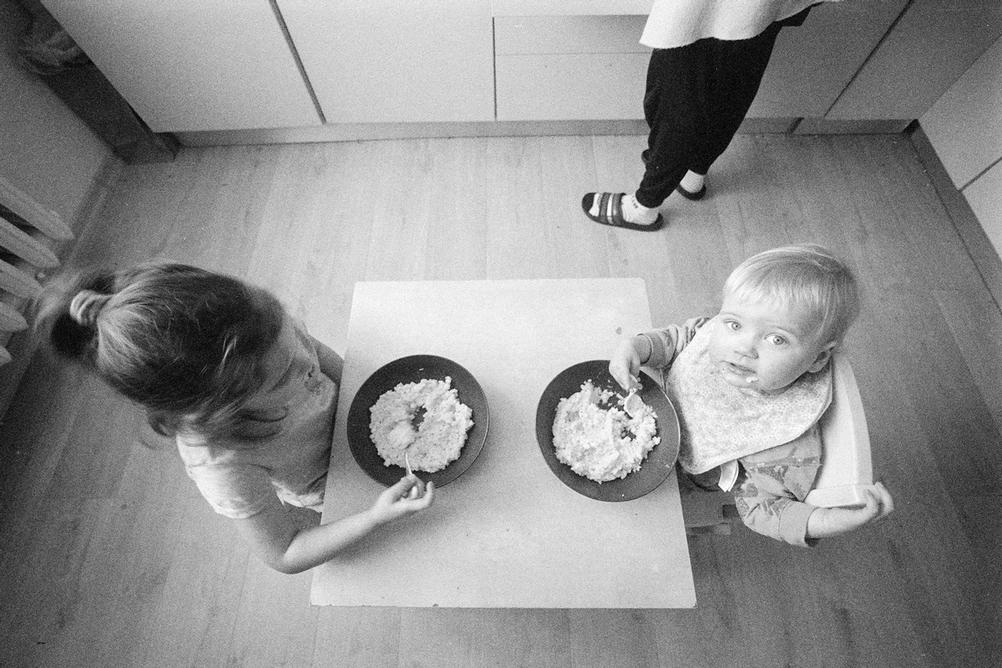
- Camera
- Canon P
- Lens
- Voigtländer Super Wide Heliar 15mm f4.5
- Film
- Kodak T-MAX 400 EI800
- Development
- Kodak HC-110; Dilution B; 7:30min
- Scanner
- Reflecta ProScan 10T
With 15mm it's easy to take snapshots of everyday life. Like on a phone. Only results look like photos and not digital pixel mess.
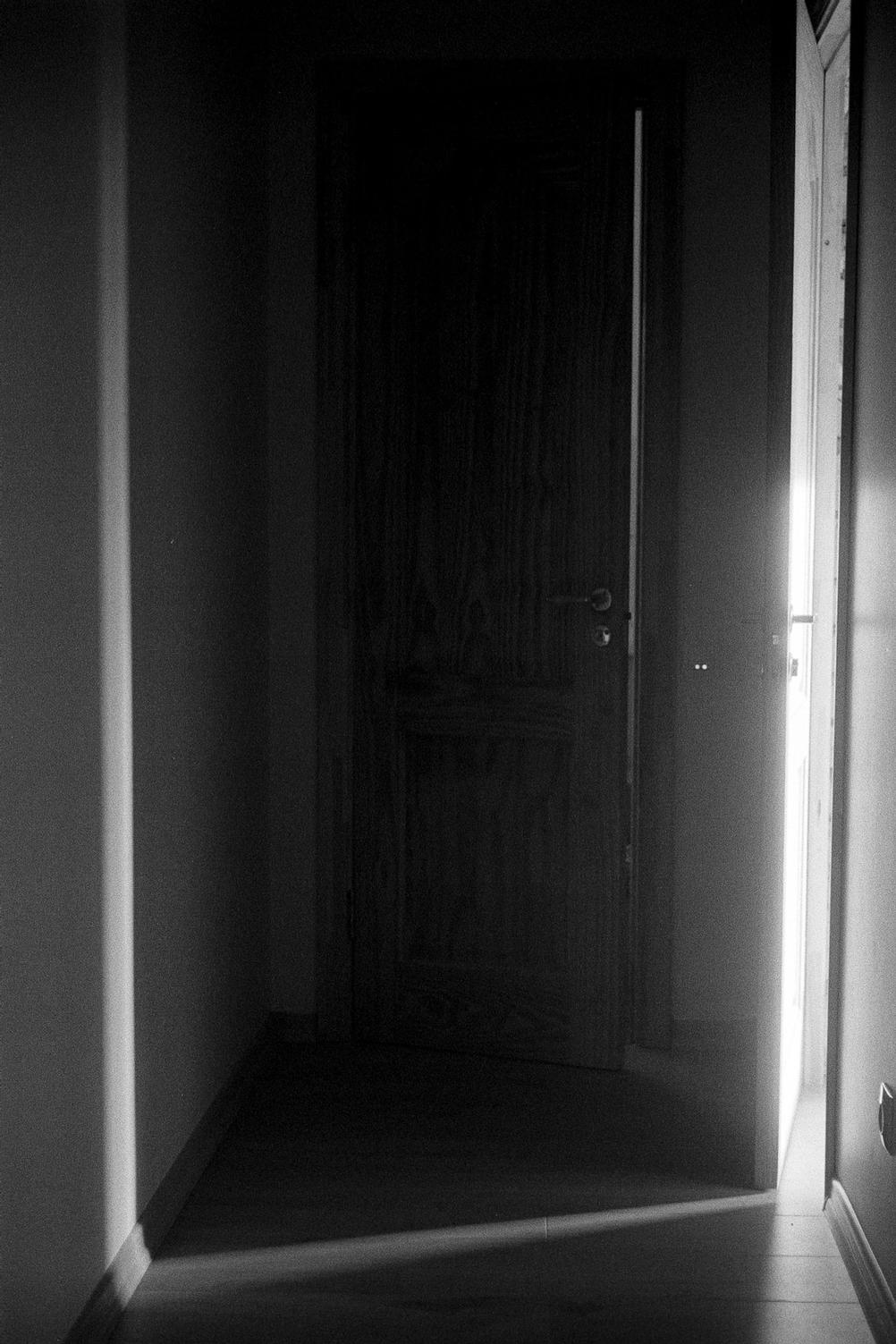
- Camera
- Canon P
- Lens
- Canon LTM 50mm f1.8
- Film
- Kodak Tri-X EI400
- Scanner
- Reflecta ProScan 10T
Light playing with the doors. Like I mentioned - I don't really have many pictures I absolutely love that have been made with Canon P. Most of the better ones are with my family as the main subject.
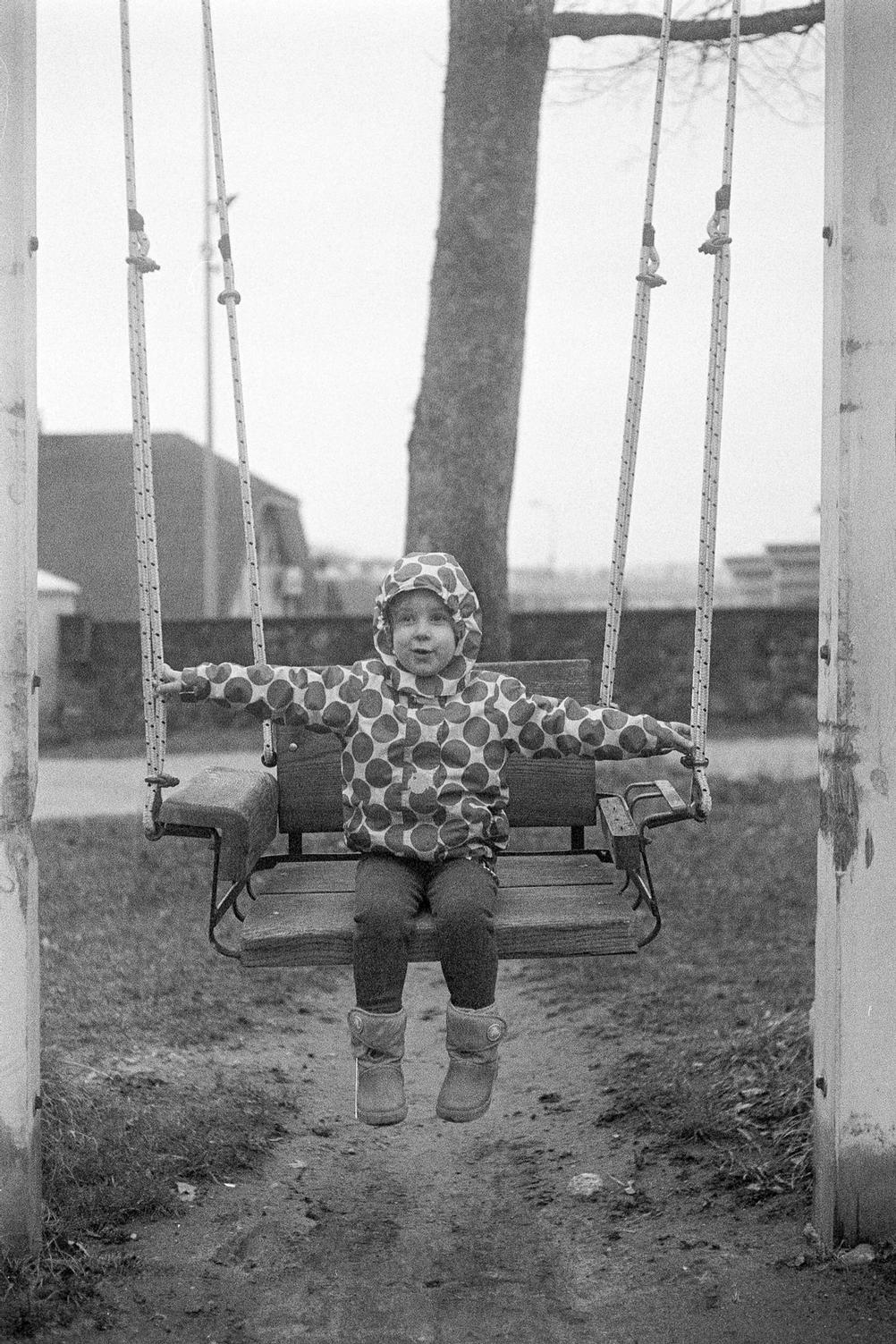
- Camera
- Canon P
- Lens
- Canon LTM 50mm f1.8
- Film
- Kodak Tri-X EI400
- Scanner
- Reflecta ProScan 10T
Maybe the reason why most of the better photos with Canon P are about my family is the fact that it's easy to take this camera with you. It's small. Easy to handle. A good combination for everyday shots.
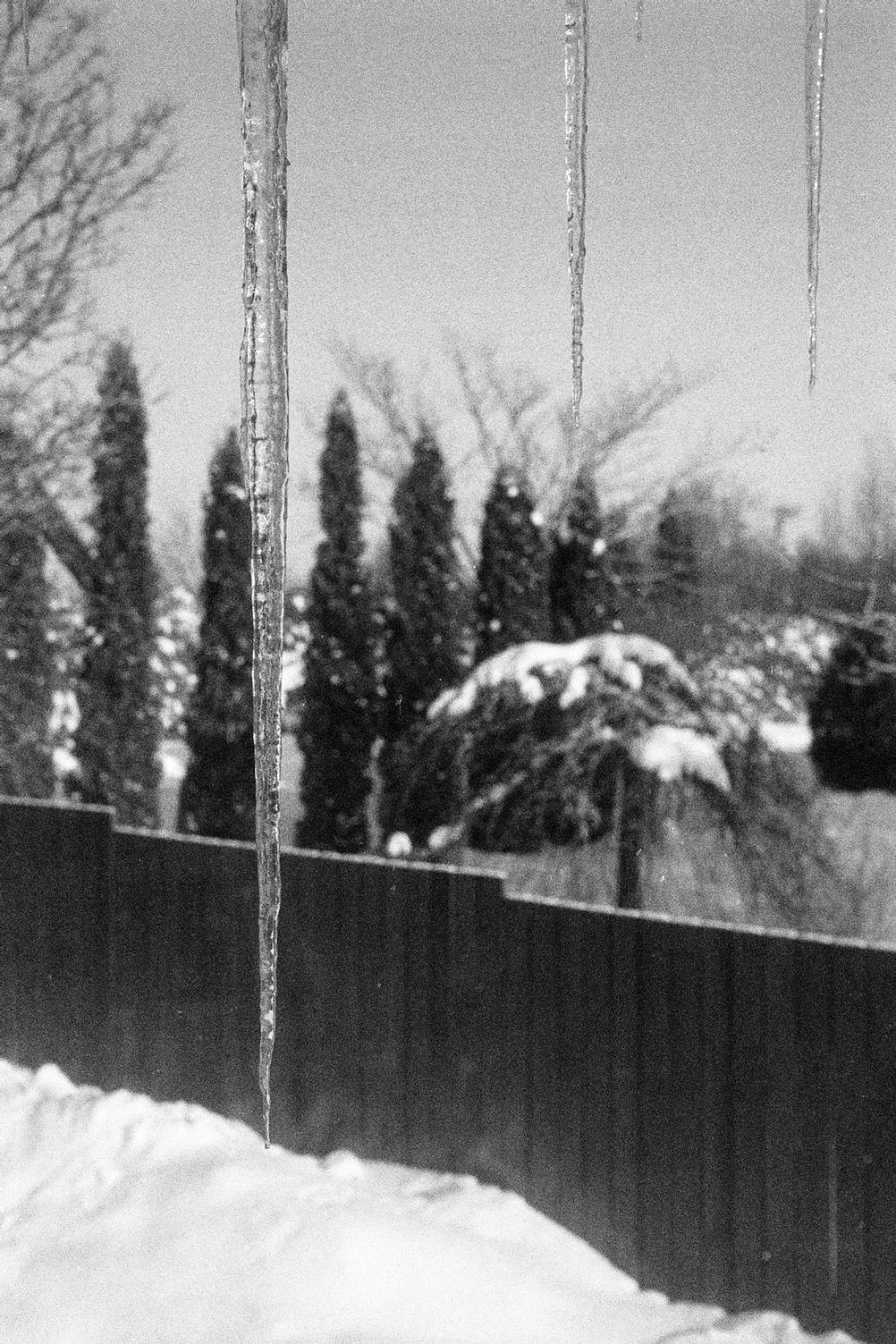
- Camera
- Canon P
- Lens
- Canon LTM 50mm f1.2
- Film
- Kodak T-MAX 400 EI800
- Development
- Kodak HC-110; Dilution B; 7:30min
- Scanner
- Reflecta ProScan 10T
It's also nice to have it always loaded with film. Pick it up because it looks good and end up taking a photo.
Verdict
It's a very good camera. I would even call it a great first rangefinder camera. I have a belief that quite a few people dislike rangefinders because they tried a rangefinder with a poor viewfinder. Zorki comes to mind. If the first rangefinder has a good viewfinder and easy to use patch - the rangefinder world domination would only grow faster. Canon P has that sort of viewfinder and rangefinder patch.
Myself - I like it. I love the looks. It feels good to hold. But I have cameras that I prefer to use more. I doubt that I would sell my Canon P - if only because I like to look at it. But it's not a camera I use often.
I would like to try a Canon VI camera ( either VI-L or VI-T ). It has the same good looks of Canon P but also comes with a more refined viewfinder. That could be a replacement for my Canon P. There's no rush on it - I like to look at my Canon P.
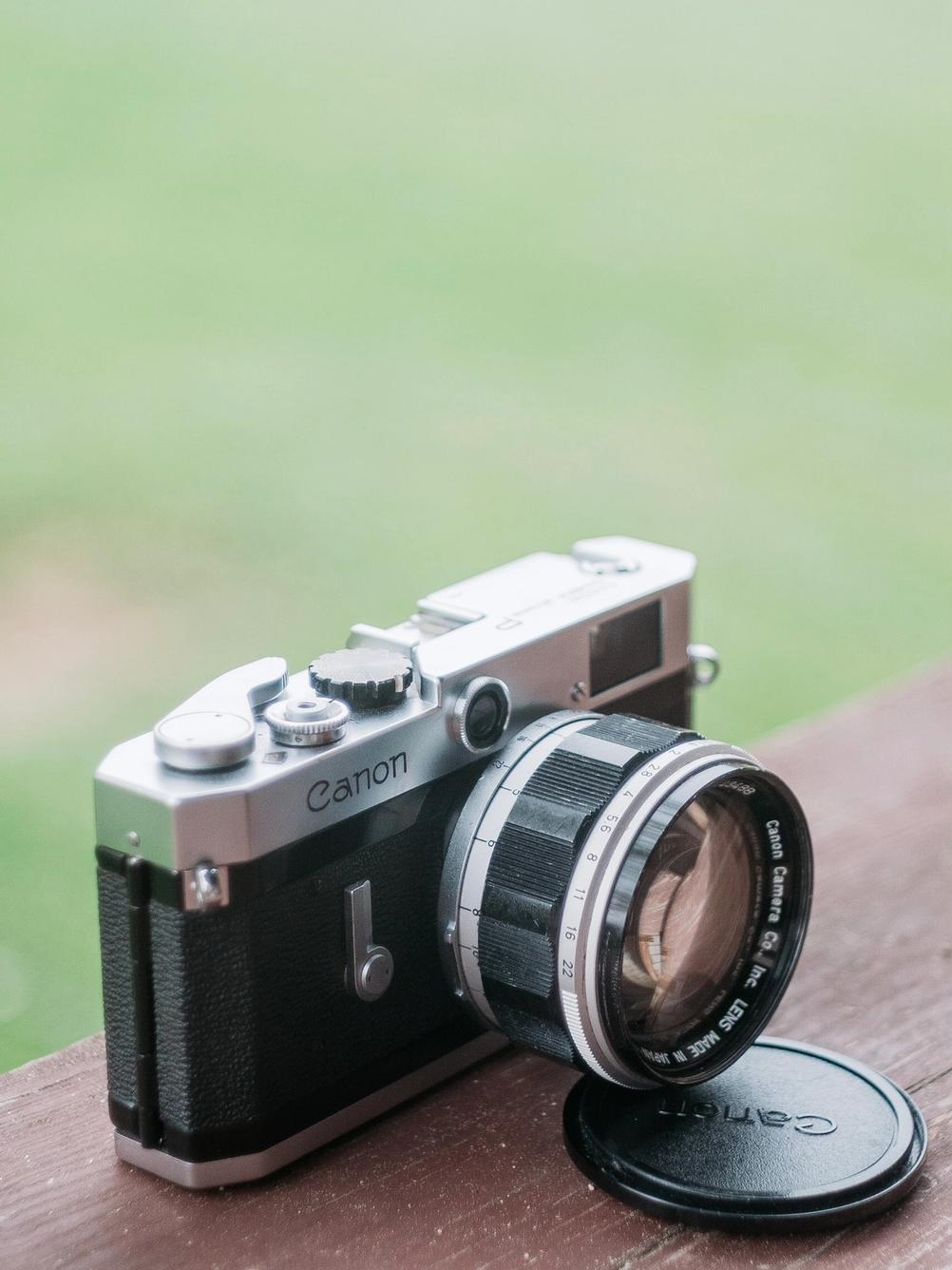
Canon P is so good that it's practically glowing. Or maybe the lens that took this photo made it glow. Who knows.
